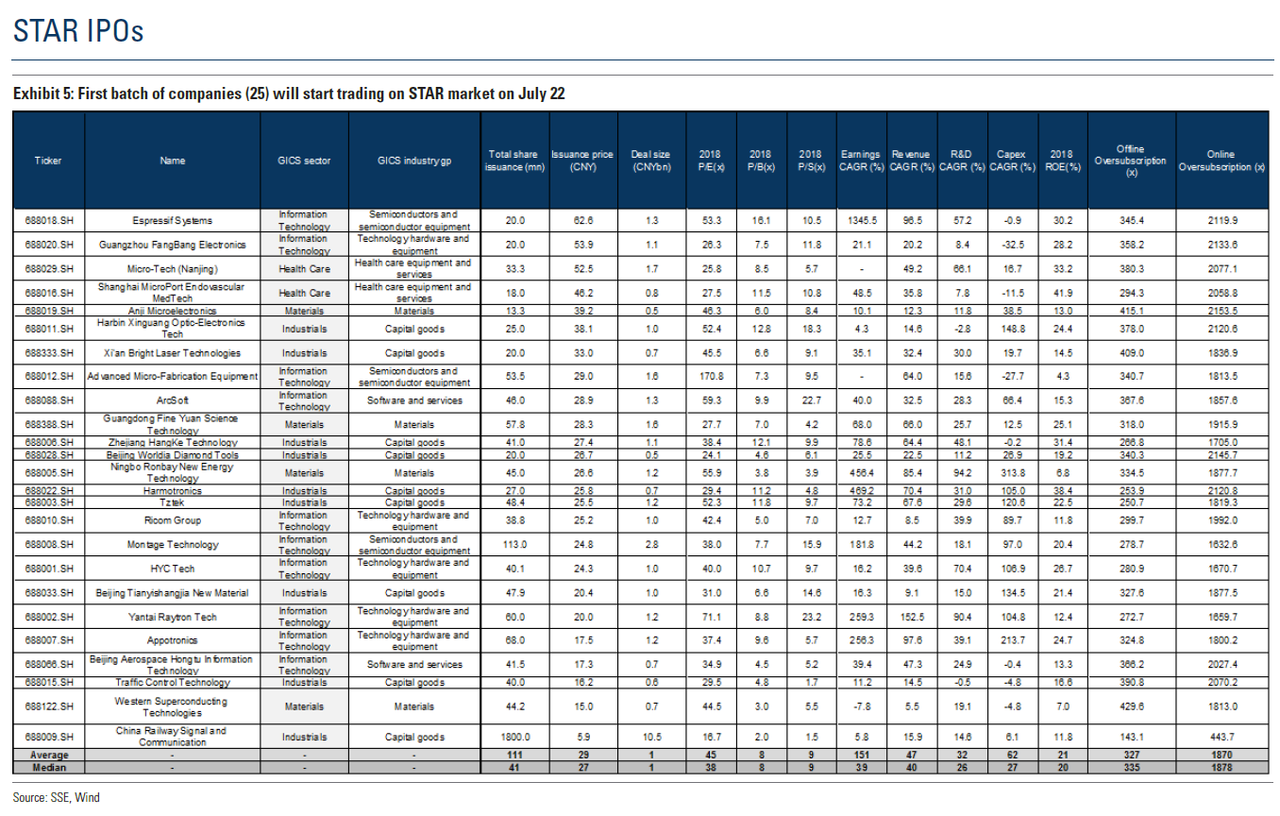China’s long-awaited Star market started trading on Monday, and oh what a session it was. Chinese investors rushed to trade the 25 companies listed on the exchange, and the explosion of activity caused prices to climb an average of 140% intraday, producing a distinct echo of Chinese equity bubbles past.
Beijing hopes the Star Market, billed as Shanghai’s answer to the Nasdaq, will ideally inspire more science and technology-focused companies to list at home, rather than seeking an offering in Hong Kong or, worse, New York.
The launch is happening at a curious time. The trade war between Washington and Beijing has forced the Communist Party to contemplate what life would be like following a complete break with the US.
More than 140 technology and science companies have signed up to list on the new facility, which is run by the Shanghai Stock Exchange. In the beginning, the exchange aims to raise Rmb128.8 billion or $18.7 billion for its listed companies.
The frenzied trading during the market’s first session inspired some truly baffling moves: Anji Technology climbed as much as 520% during the first session (see below), and shares of Montage Technology climbed 285%. Four of the 25 listed stocks were up more than 200%. More than 16 stocks were up 100%.
Even the weakest performer leapt 84.22%.
The Shanghai Composite weakened as investors were drawn to the new exchange, which created an additional $44 billion of market cap for Chinese markets, Reuters reports, beating the expectations of even veteran investors.
Institutional market participants admitted that the price fluctuations were more violent than they had anticipated.
“The price gains are crazier than we expected,” said Stephen Huang, vice president of Shanghai See Truth Investment Management. “These are good companies, but valuations are too high. Buying them now makes no sense.”
Rapid moves like these are rare in China since Beijing has a habit of shutting down trading when things get volatile.
The Shanghai and Shenzhen exchanges permit prices of new issues to move 44% during their first day of trade, then 10% every day after that. By comparison, on the Star Market, there are no limits during a stock’s first five days of trading. And after that, stocks will be allowed to move up to 20% a day in either direction.
Though it might sound counterintuitive, allowing shares to register such exaggerated moves helped boost the market’s credibility, as the government declined to intervene.
China tries again to boost the credibility of its volatile stock market https://t.co/Il7jX5GCjX
— Evelyn Cheng (@chengevelyn) July 22, 2019
To try and limit the influence of retail investors, Star Market only allows those with at least 500,000 yuan ($72,700) in their brokerage accounts to trade.
Investors see the government’s backing of the new market as a key attraction.
“The government is backing it and investors are speculating that the government will support it,” said Margaret Yang, market analyst with CMC Markets Singapore.
However, Ms Yang warned that this may not be enough to guarantee the market’s long-term prospects. “This game can keep going for at least a few days but in the long run it’s hard to say,” she said.
The new market is unique in China, and offers unique enticements to attract tech companies to list, including allowing dual-class shares that preserve founders’ control. Investors are also permitted to short sell individual stocks, a practice that has at times been forbidden in China’s extant markets.
Trinh Nguyen, a senior economist at Natixis, said Beijing wanted to convince domestic tech companies that domestic markets could handle their IPOs.
Whether they were successful remains to be seen. But soon, the NYSE and Nasdaq might lose out on the steady stream of Chinese listings that had become a dependable source of income until recently.
via ZeroHedge News https://ift.tt/2GoRbM8 Tyler Durden
